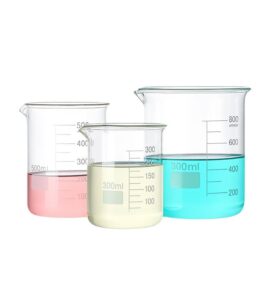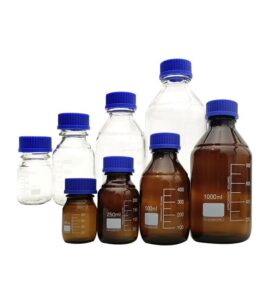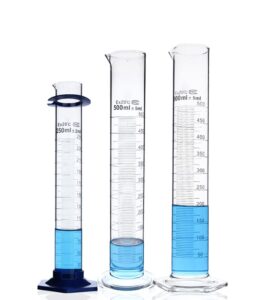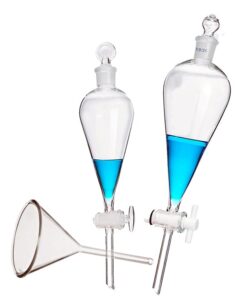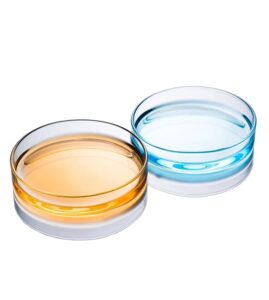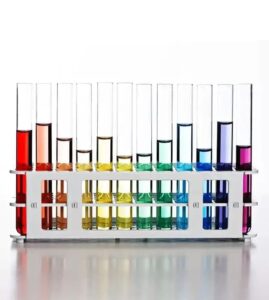Have you ever wondered how scientists and researchers separate complex mixtures in the lab? What tool do they use to ensure precision and accuracy in their experiments? Enter the separatory funnel, a staple in laboratories worldwide. But what makes it so essential and how does it work?
The separatory funnel, often simply called a sep funnel, is a device used primarily in chemistry labs to separate immiscible liquids—that is, liquids that do not mix together. It’s a critical tool for chemists and researchers, enabling them to conduct experiments with a high degree of precision. This piece of equipment might look simple, but it plays a huge role in the success of various scientific explorations.
Let’s delve deeper into the world of the separatory funnel, a seemingly magical tool that separates substances with ease.

What is a Separatory Funnel
A separatory funnel is a pear-shaped, transparent container made of glass or plastic, often equipped with a stopcock at the bottom. It’s used in liquid-liquid extractions to separate components of a mixture based on their different densities. The principle behind its working is simple yet effective – it exploits the density differences between immiscible liquids to separate them.
How Does a Separatory Funnel Work
When a mixture of two immiscible liquids is placed in the funnel, they form distinct layers. The denser liquid settles at the bottom, while the lighter one floats on top. By opening the stopcock, the bottom layer can be drained off, effectively separating the two liquids. This method is commonly used to extract a compound from a solution or to remove impurities.
The Importance of the Separatory Funnel in Laboratories
Separatory funnels are essential in organic chemistry labs for tasks like purifying compounds and preparing samples for analysis. They’re also used in industries like pharmaceuticals, where purity is paramount. Their ability to precisely separate mixtures makes them invaluable in many scientific fields.
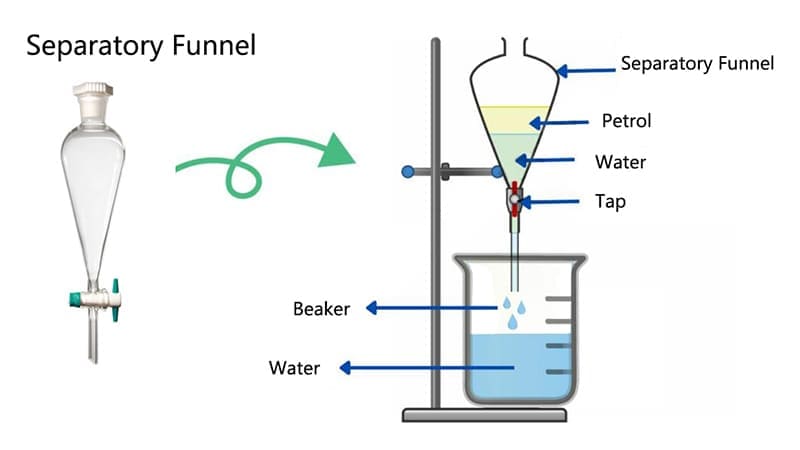
Essential Roles and Applications of Separatory Funnels in Laboratory Practices
A separatory funnel, commonly used in laboratories, serves several key purposes:
- Reaction Device for Solid-Liquid or Liquid-Liquid Mixtures: It is primarily used for facilitating reactions between solids and liquids or between different liquids. By controlling the flow rate and the amount of liquid added, it ensures precise control over the reaction, enhancing the accuracy and repeatability of experimental results.
- Separation of Phases: Separatory funnels are extensively used to separate phases in chemical experiments. This includes separating organic and aqueous phases, acid-salt solutions, and solid particles from suspensions. The separation process exploits the different densities of the liquids or mixtures, making it crucial in fields like chemical synthesis, pharmaceutical purification, and food processing.
- Controlled Addition of Liquids: In addition to serving as a reaction and separation device, separatory funnels are also used for the controlled addition of liquids, such as in gas generation setups. They allow for precise, drop-by-drop addition of a liquid, facilitating finer control over the process.
The effective use of a separatory funnel not only improves experimental efficiency and accuracy but also extends its lifespan. Safety is a key consideration in its use to avoid damage like scratches or breakage. Additionally, selecting the appropriate size and type of separatory funnel is important to meet the specific needs of different experiments.
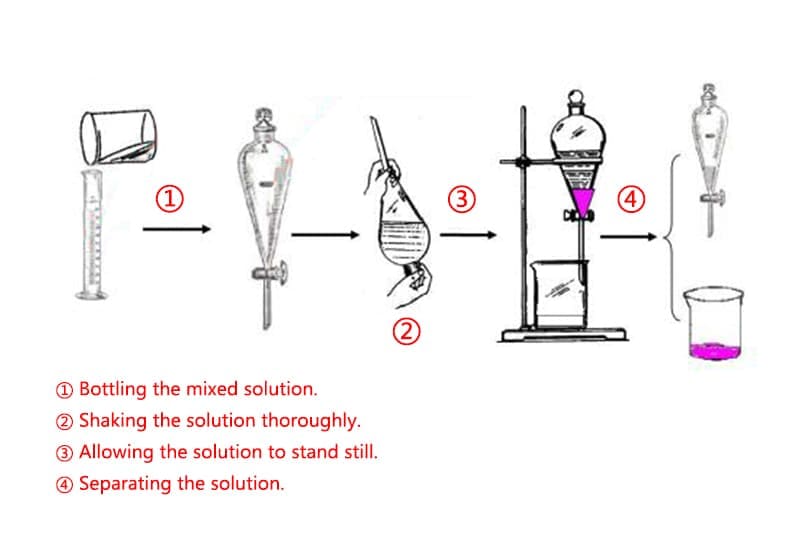
Step-by-Step Guide to Using a Separatory Funnel
Using a separatory funnel correctly is essential for efficient and safe laboratory work. Here’s a guide on how to use it properly, along with some precautions:
Preparation Phase
- Inspect the Funnel: Before use, check the separatory funnel for any damage, cracks, or imperfections. Ensure the glass stopper and stopcock are clean, dry, and functioning smoothly.
- Choose the Right Container: Select an appropriate container (like a conical flask or beaker with a ground glass stopper) based on the nature and volume of the liquids to be separated.
- Set Up the Funnel: Place the funnel in the chosen container securely. Pour the liquids to be separated into the funnel, taking care not to exceed its maximum capacity.
Operation Phase
- Open the Stopcock: Gently open the funnel’s stopcock to allow the liquids to flow. Control the degree to which it’s opened to prevent rapid outflow or bubbling.
- Separate the Liquids: With the stopcock open, use gravity or gentle shaking to separate the two liquids. Typically, the lighter liquid will float on top while the heavier one settles at the bottom.
- Collect the Liquids: Once fully separated, close the stopcock. Remove the funnel from its stand and collect the separated liquids in appropriate containers, being careful to maintain the separation.
- Clean the Funnel: After the separation, clean any residues and dirt inside the funnel using appropriate cleaning agents and rinse with water. Wipe it dry with a clean cloth.
- Dry the Funnel: If there’s any remaining moisture or liquid, dry the funnel before storing it. You can air-dry it by inverting it or use desiccants.
- Store the Funnel: After the experiment, store the funnel in a dry, cool place away from direct sunlight and high temperatures to preserve its precision and lifespan.
Precautions
- Always prioritize safety to avoid scratches, breakages, or other accidents.
- If using electrical heating devices, check for damaged or aging cords to prevent electrical hazards or fire.
- Wear protective clothing and gloves when handling toxic or corrosive liquids. Ensure airtight connections between the container and the funnel to prevent leaks.
- Clean up promptly after experiments to avoid leaving hazardous materials or waste.
- Avoid subjecting the funnel to sharp impacts or vibrations, which can affect its accuracy and lifespan.
- Familiarize yourself with the funnel’s operating instructions and follow them strictly.
- If you notice any abnormalities with the funnel, stop using it immediately and inspect or repair it as necessary.
Properly using a separatory funnel is a crucial skill in laboratory work. Understanding its operation, safety precautions, and maintenance ensures improved experimental efficiency, accurate results, and extends the funnel’s lifespan.
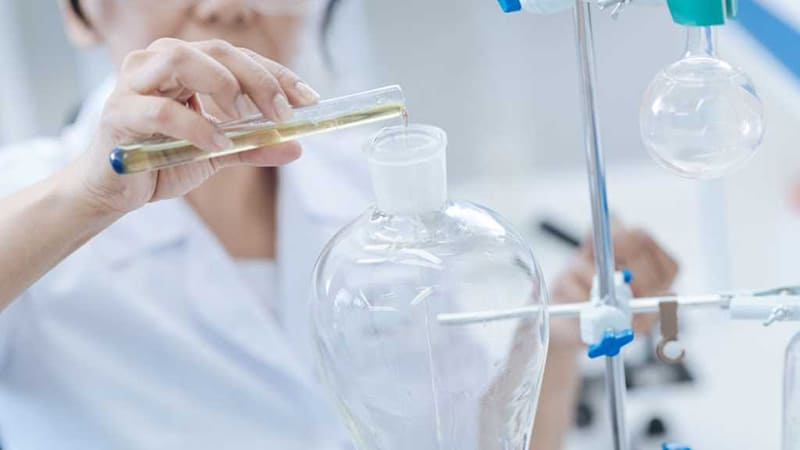
The Versatility of the Separatory Funnel in Various Scientific Disciplines
The use of the separatory funnel extends beyond basic chemistry labs. Its versatility makes it an indispensable tool across various scientific disciplines:
- Pharmaceuticals: In drug development and quality control, separatory funnels help purify compounds, ensuring the safety and efficacy of pharmaceutical products.
- Environmental Science: For testing water and soil samples, separatory funnels can extract pollutants, aiding in environmental monitoring and cleanup efforts.
- Food and Beverage Industry: They are used to test for contaminants and to ensure the quality of products, playing a crucial role in food safety.
This wide range of applications highlights the separatory funnel’s importance in scientific research and industry, making it a fundamental tool for professionals and students alike.
Common Misconceptions and Troubleshooting
While the separatory funnel might seem straightforward, there are common misconceptions and challenges users might encounter:
- Mixing of Layers: Sometimes, the two layers might appear mixed, making it difficult to separate them. This usually happens due to excessive shaking or the presence of emulsions. Gentle agitation and patience are key to resolving this.
- Clogging: The stopcock might get clogged, especially with particulate matter. Regular cleaning and proper usage can prevent this issue.
- Leakage: Ensure that the stopcock is properly sealed to avoid leaks during the separation process.
Understanding and addressing these challenges is vital for efficient and safe use of the separatory funnel.
Advanced Techniques and Innovations
In recent years, advancements have been made in the design and functionality of separatory funnels:
- Automated Separatory Funnels: These provide more precise control over the separation process, enhancing efficiency and reproducibility.
- Specialized Funnels: Funnels designed for specific applications, like those with pressure equalization capabilities, offer enhanced functionality for complex tasks.
These innovations reflect the ongoing evolution of laboratory equipment, catering to the growing needs of modern science.
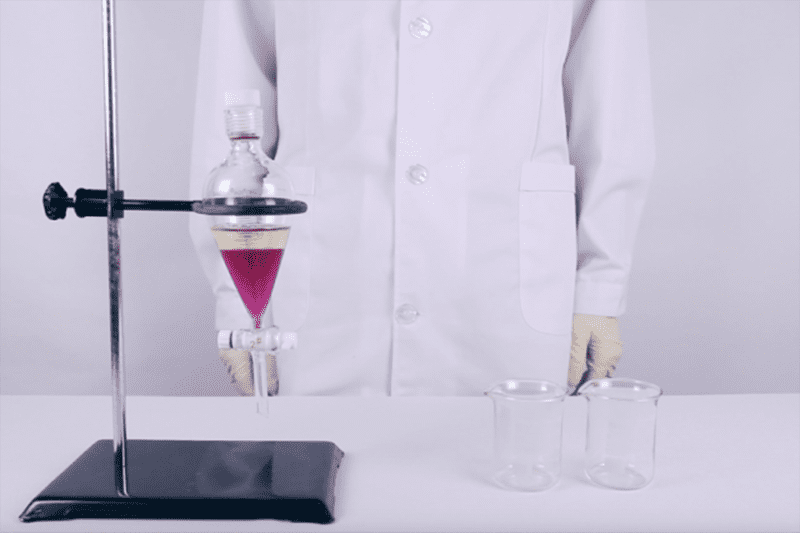
The Educational Value of the Separatory Funnel
In educational settings, the separatory funnel is more than just a tool; it’s a means of teaching fundamental concepts in chemistry and related sciences:
- Practical Learning: Students gain hands-on experience with real-world laboratory techniques, enhancing their understanding and skills.
- Problem-Solving: Troubleshooting issues like emulsions or clogs fosters critical thinking and problem-solving abilities.
- Safety Education: Learning to use the funnel safely instills a culture of safety in the laboratory, which is crucial for budding scientists.
The separatory funnel, therefore, plays a significant role in shaping the next generation of scientists and researchers.
Future Prospects and Ongoing Developments
Looking ahead, the role of the separatory funnel in scientific research is likely to evolve with technological advancements. As we move towards more automated and precise laboratory processes, the integration of digital controls and sensors in separatory funnels could revolutionize how they are used. These developments would not only increase efficiency but also enhance the accuracy of separations, opening new avenues in complex chemical analyses and research.
Moreover, there’s a growing trend towards eco-friendly and sustainable laboratory practices. In this context, the development of separatory funnels made from environmentally friendly materials, or those designed for minimal waste generation, could become a focus. Such innovations would align laboratory practices with global sustainability goals, making science more eco-conscious.
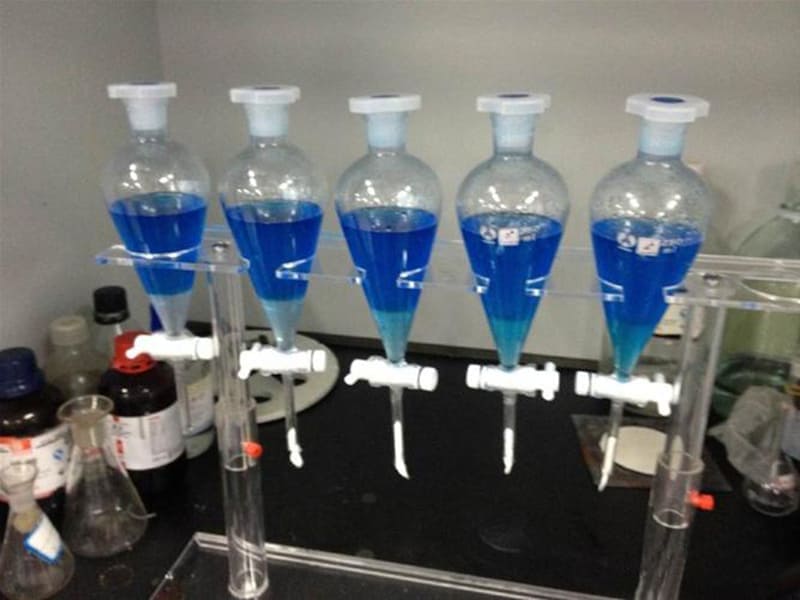
The Role of the Separatory Funnel in Collaborative Research
In the collaborative landscape of modern science, the separatory funnel also plays a unique role. It’s a tool that often requires shared use in educational and research laboratories, fostering a culture of collaboration and teamwork. Learning to use this equipment effectively in a shared environment teaches essential skills like time management, responsibility, and cooperative working, which are invaluable in any scientific career.
Additionally, as research becomes increasingly interdisciplinary, the separatory funnel serves as a common tool across various fields. It provides a point of convergence for chemists, biologists, environmental scientists, and even engineers, promoting interdisciplinary learning and collaboration.
Incorporating Technology in Separatory Funnel Training
With the rise of digital learning tools and virtual laboratories, there’s significant potential to enhance the training on separatory funnels using technology. Virtual reality (VR) and augmented reality (AR) simulations could offer students and new scientists a risk-free environment to learn and practice the techniques associated with the separatory funnel. Such technological integration not only makes learning more accessible and safer but also adds an element of engagement that traditional methods might lack.
Challenges and Considerations for Future Use
Despite its many advantages, the use of the separatory funnel also comes with challenges, particularly in terms of skill development and safety. Proper training is essential to ensure that users can effectively handle and troubleshoot the equipment. Additionally, as the complexity of experiments increases, so does the need for more advanced separatory funnel techniques, necessitating ongoing education and skill development.
Embracing Sustainability and Safety in Separatory Funnel Usage
An important aspect of modern laboratory practices is the emphasis on sustainability and safety. The use of separatory funnels, like any laboratory equipment, must align with these principles:
- Eco-Friendly Practices: Encouraging the use of recyclable or biodegradable materials in the construction of separatory funnels can contribute significantly to reducing the ecological footprint of laboratories.
- Safe Disposal of Chemicals: Proper disposal techniques for the chemicals used in separatory funnels are essential. This includes the treatment of hazardous waste and adherence to environmental regulations.
- Safety Training: Regular safety training sessions for laboratory personnel, focusing on the correct handling of separatory funnels and associated chemicals, are crucial. This helps in minimizing the risk of accidents and promoting a culture of safety.
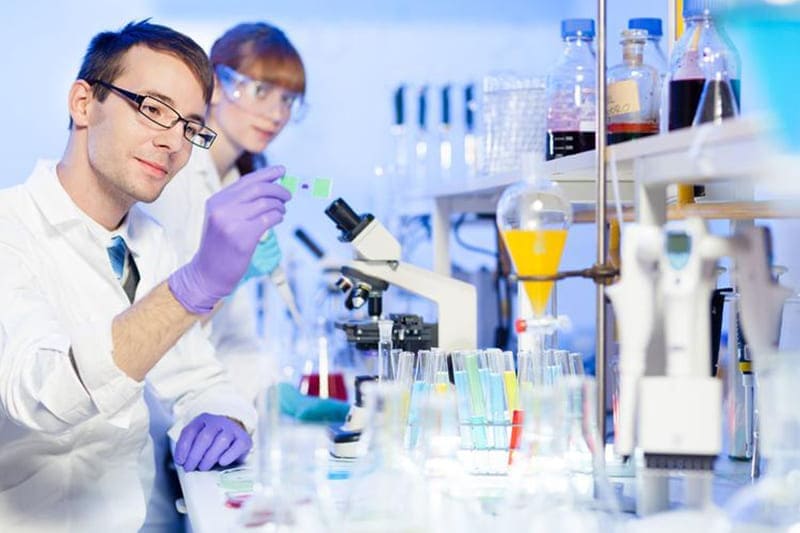
The Interplay Between Separatory Funnels and Modern Analytical Techniques
The integration of separatory funnels with advanced analytical techniques highlights another significant aspect of their use:
- Combination with Spectroscopy and Chromatography: Post-separation, the isolated components are often analyzed using techniques like spectroscopy or chromatography. The purity and quality of the separated substances significantly impact the accuracy of these analytical methods.
- Role in Sample Preparation: In many instances, separatory funnels are used in the preparatory phase of complex analytical procedures, underscoring their role in the success of these analyses.
Economic and Operational Aspects of Separatory Funnels
Beyond the scientific and educational perspectives, it’s essential to consider the economic and operational aspects of using separatory funnels:
- Cost-Effectiveness: The separatory funnel is a relatively low-cost tool compared to other laboratory equipment, making it accessible even in budget-constrained settings.
- Maintenance and Longevity: Proper care and maintenance of separatory funnels are crucial for ensuring their longevity, reducing the need for frequent replacements and thereby saving costs.
The Global Impact of Separatory Funnels
On a global scale, the separatory funnel has made significant contributions to various fields:
- International Research and Collaboration: Its ubiquity in laboratories worldwide facilitates standardization in experimental methods, aiding in international research collaborations.
- Contributions to Global Health and Environment: From developing new pharmaceuticals to monitoring environmental pollutants, the separatory funnel plays a key role in initiatives that impact global health and the environment.
Conclusion
The journey through the world of the separatory funnel reveals its indispensable role in advancing scientific knowledge. It’s a tool that embodies precision, innovation, and a commitment to discovery. As you continue to explore and expand the frontiers of science, consider the power of this essential instrument in your laboratory. To discover more about the separatory funnel and explore a wider range of innovative laboratory tools, I invite you to visit here. Embrace the tools that empower your research and join the community of scientists making groundbreaking discoveries.


